I had a funny early experience on the first full day of use with the new Samsung Gear Sport. I’d lost track of time while working on documents in the office. Until the new watch suddenly vibrated, announcing that I’d been sitting on my butt for too long – an hour to be exact – and I should get up, and do five torso twists. Don’t know what those are? No worries – the watch helpfully ran an animation to guide me along. And sometime later in the day, I had to head out of my office for a meeting. After getting up, barely 5 steps later, the Gear Sport helpfully piqued “well-done, good to know that you’re off your feet finally to do some exercise!” LOL.
There’s basically my net takeaway of the Samsung Gear Sport. As a smartwatch, it’s not really too different from the Huawei Watch from a functional point of view. But as a health and activity tracker, it sure is zealous in its mission to get its wearers to do simple physical activities all day long.
The Samsung Gear Sport is sold at a recommended retail price tag of SGD449 in stores here. Quite a bit higher than Amazon’s list price of USD275 with frequent price fluctuations, though various stores here also offer bundled discount vouchers and also additional accessories (e.g. straps). I found a Lazada reseller selling it for SGD378/USD284 – a little higher but I get the local warranty. Credit especially to the reseller too who delivered the watch to the door step in less than 24 hours.
And four days after wearing the watch at all times – excepting short 15 minute charge cycles a few times a day to keep the watch juiced up, my comments:
This is my first watch that runs Tizen, and I’m a fan of it now. Samsung’s operating system isn’t as sophisticated as Android’s, but it’s nonetheless looks polished and runs fluidly. I’m not a smartwatch power user, so have no need for the gazillions of Android Wear apps out there. So that the Tizen OS is comparatively less expansive in its range of third-party apps doesn’t bother me.
Samsung Gear’s signature rotating bezel is really helpful, and is my preferred method of scrolling through screen pages and tabs on this watch, rather than via touchscreen. The bezel though only handles scrolling and not actual input for the most part. It would had been perfect if there was a third dedicated watch button that defaults to ‘enter’ or ‘ok’.
The Gear Sport comes with onboard storage for MP3s, so you can play music through a wireless Bluetooth headphones without needing the phone. I didn’t think I was going to use this feature, but after trying it, it’s actually a lot more useful than I thought. I had no difficulties coupling it with two Bluetooth headphones – a SonicGear EarPump Studio V and an Audio-Technica ATH-AR3BT – and I’ll be taking both out in turn for running soon enough. The 4GB capacity is somewhat limited though compared to the kind of storage options you have on smartphones, but it’s still sufficient for most use-cases, excepting 40km marathons!
The watch comes with about a dozen preinstalled watch faces that’s varied in styles, and several offer further customization options. There are also additional free and paid watch faces, and I reckon that the former offers easily enough variety to satisfy most users. So, no need to purchase additional watchfaces before you find a couple that you like.
The battery dipped 3% with brightness set to ‘7’ (of 10), all tracking features on and watch face on (with 15s auto-dimming) after 90 minutes, Bluetooth integration to watch on. So, the Gear Sport should last two days, and more if power-saving features are enabled. That’s also borne out Samsung Gear app’s battery monitor – picture below.
The watch charger replenishes the watch battery wirelessly, and the dock’s base has a fairly deep cavity that helps you easily seat the watch. I recalled reading one report that the charger only works if you connect it to the USB port of a computer, but I had no such difficulties and it’s worked fine with the couple of non-Samsung third party USB chargers I’ve used it with so far. Other users have also reported that vibration alerts are a little mild, which can potentially make it hard to ‘feel’ incoming alerts. The vibration motor isn’t quite as strong as what you’ll normally get on smartphones, but if you wear the watch close to the wrist, it’s not so bad.
Charging takes a bit more time than the Huawei though even though their batteries are similar in capacity – 300 mAh. A charging test revealed that it takes roughly 15-16 minutes to run the battery up by 10% – which means about 2.5 hours to fully charge the Gear Sport – more than twice the time it takes for the Huawei.
The Samsung Health app has a nice layout, and customizable too. Oddly, I couldn’t get the app to measure heart rate using the watch only and not smartphone. A bug maybe?
Pictures and screen shots!
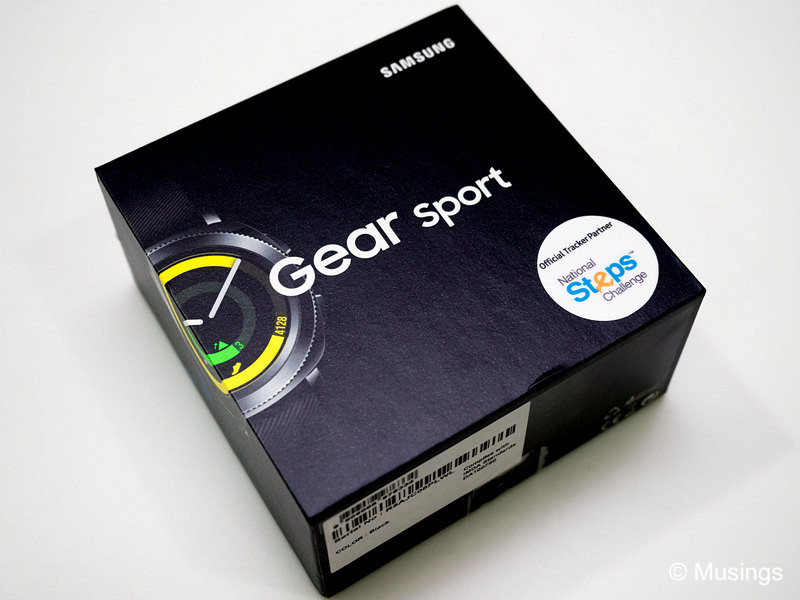
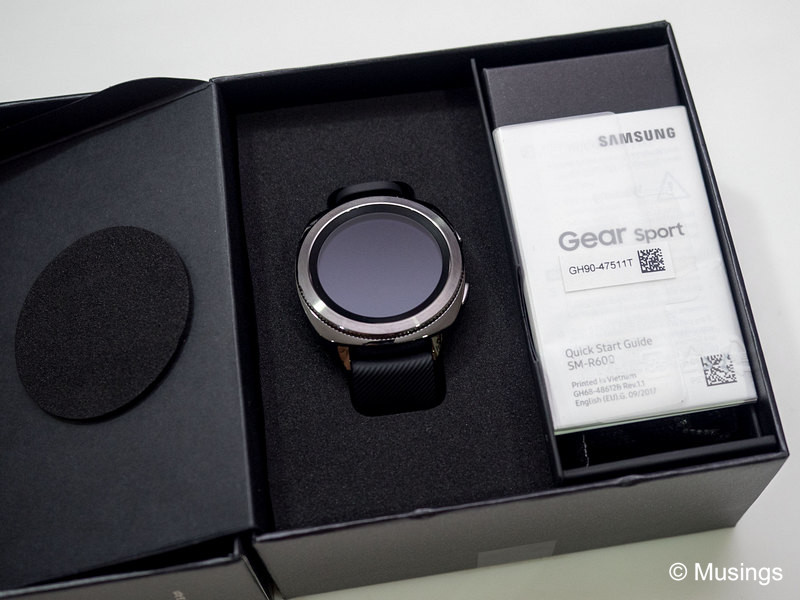
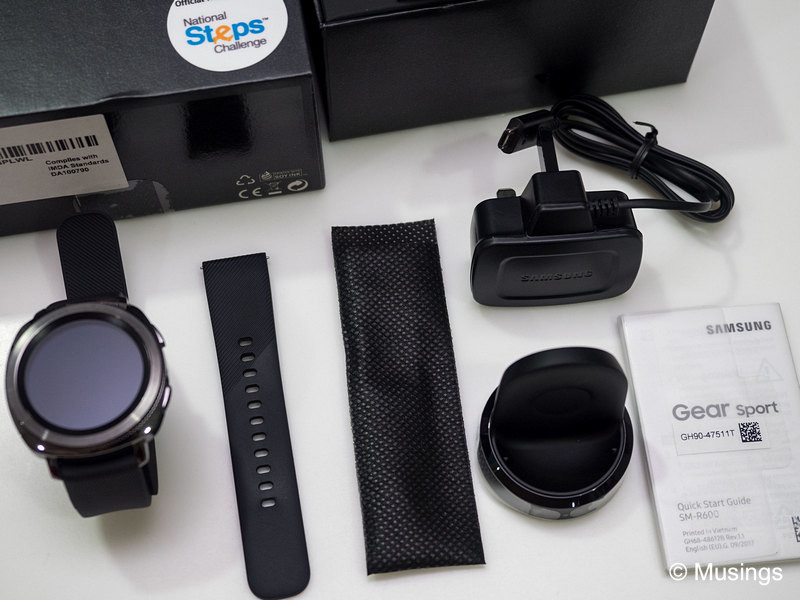
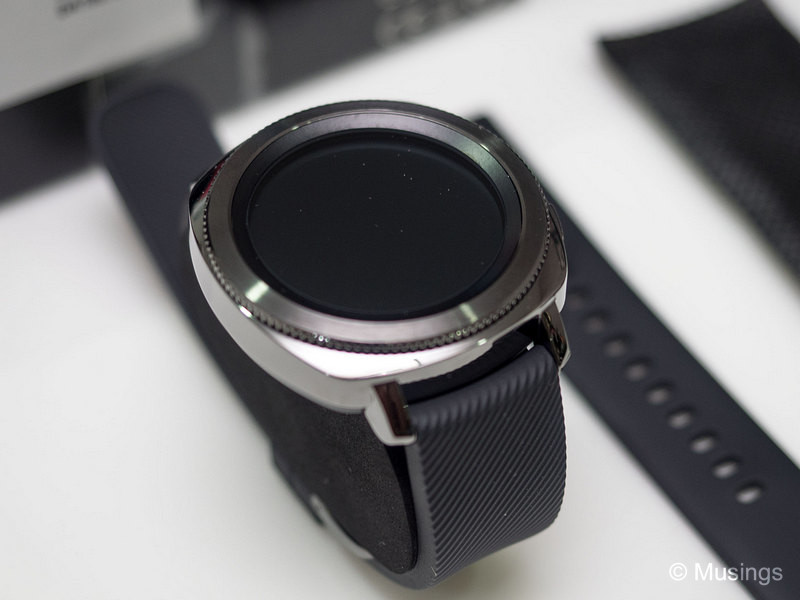
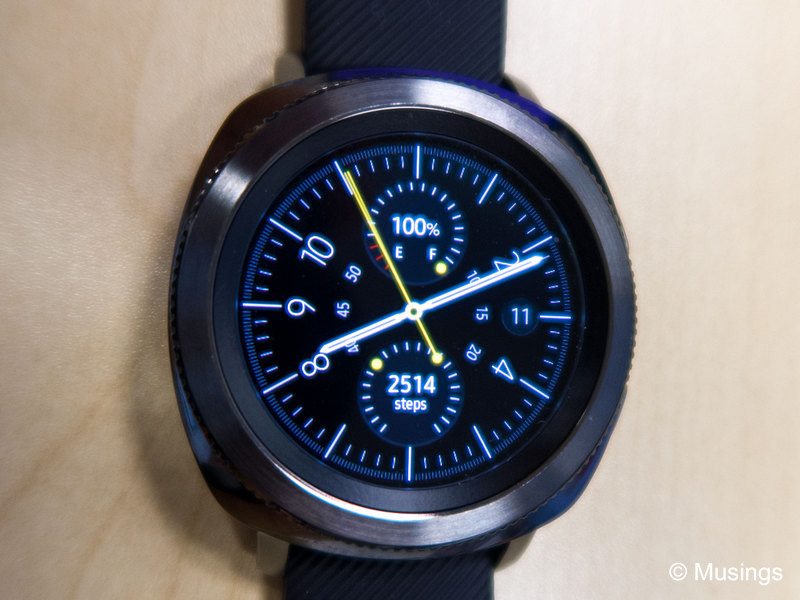
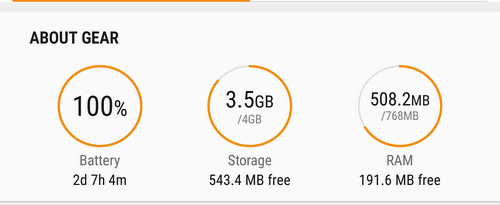
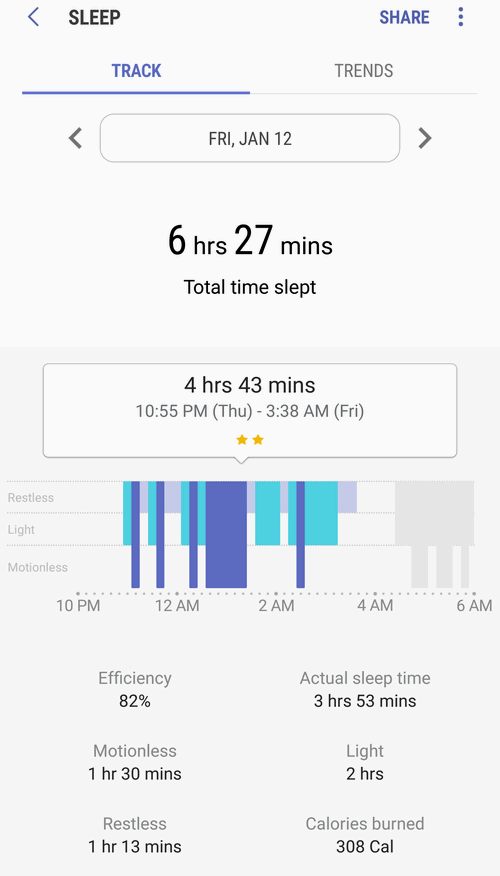
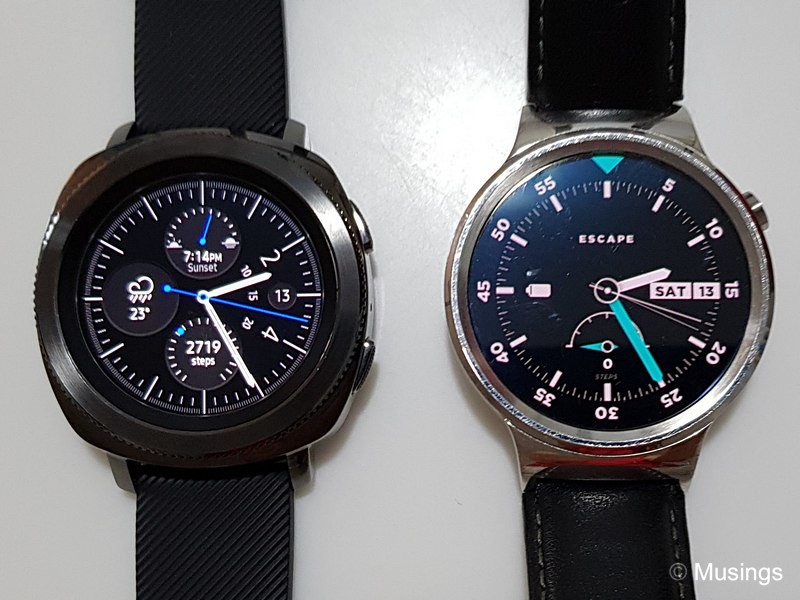
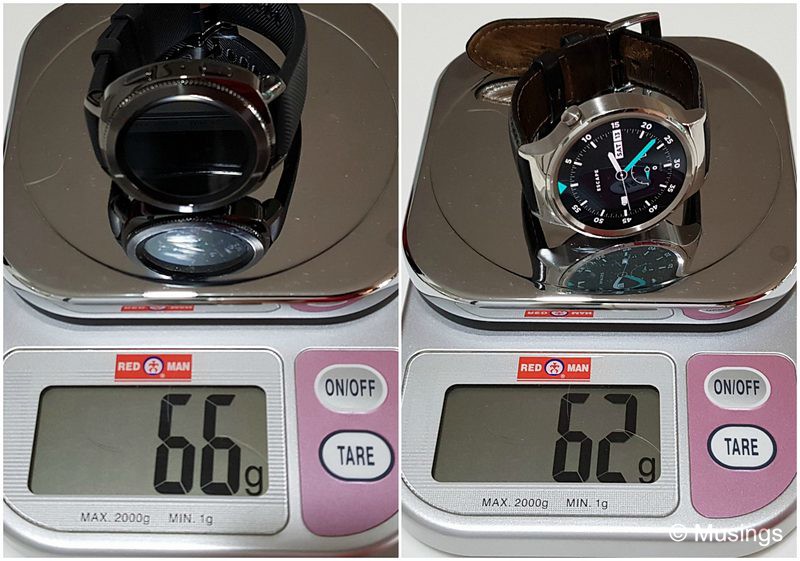
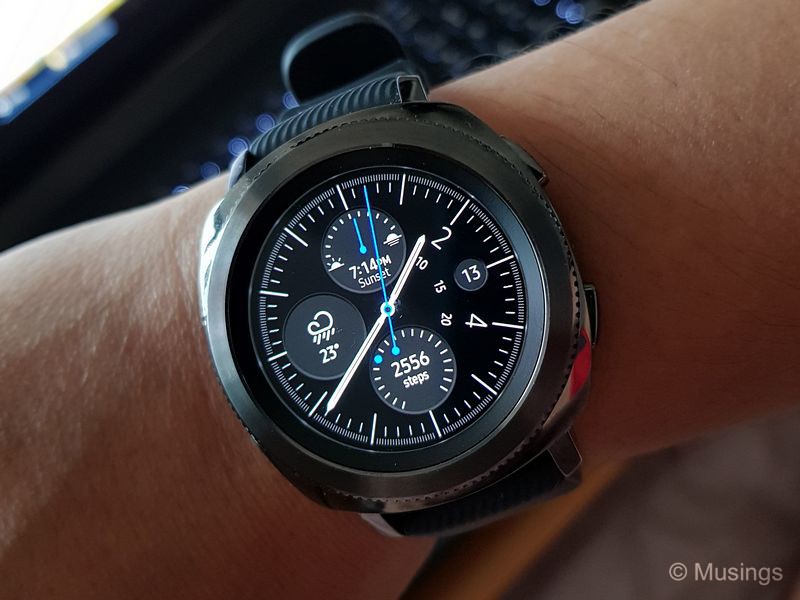
The Samsung Gear Sport would be perfect if the watch battery could run longer than its 2 days longevity in most use-cases, and the watch slightly cheaper than the about SGD370 as sold here. Still, I’m glad I went with this rather than a Garmin offering. Tizen works great, the screen is lovely, and built-in trackers and alerts actually useful and effective in reminding me to get up when I’ve been sitting too long. I’ll do a follow-up post once I use it for running and swimming, so more to come at some point!
Hello there. How is this Samsung Gear sport different from Samsung’s other smart watch offering (Gear S3)?
Well, the two watches – Gear 3 and Gear Sport – share a lot of similarities: same OS (Tizen), hardware specification, RAM/storage etc. – but their differences from what I know are that:
– The Gear Sport is smaller in size (smaller watch face too + battery), slightly newer, and also might be slightly more expensive
– The Gear Sport is also rated to be waterproof, not just water-resistant (like the Gear 3)
– The Gear 3 supports Magnetic Secure Transmission while the Gear Sport doesn’t. This spec doesn’t matter to me at all since I use Android Pay on my phone already.
If you don’t need the waterproof-ness and you’re considering either watch, then I feel the Gear 3 will be a better watch. In my case, I specifically was going to wear the watch while swimming, so I couldn’t pick the Gear 3.